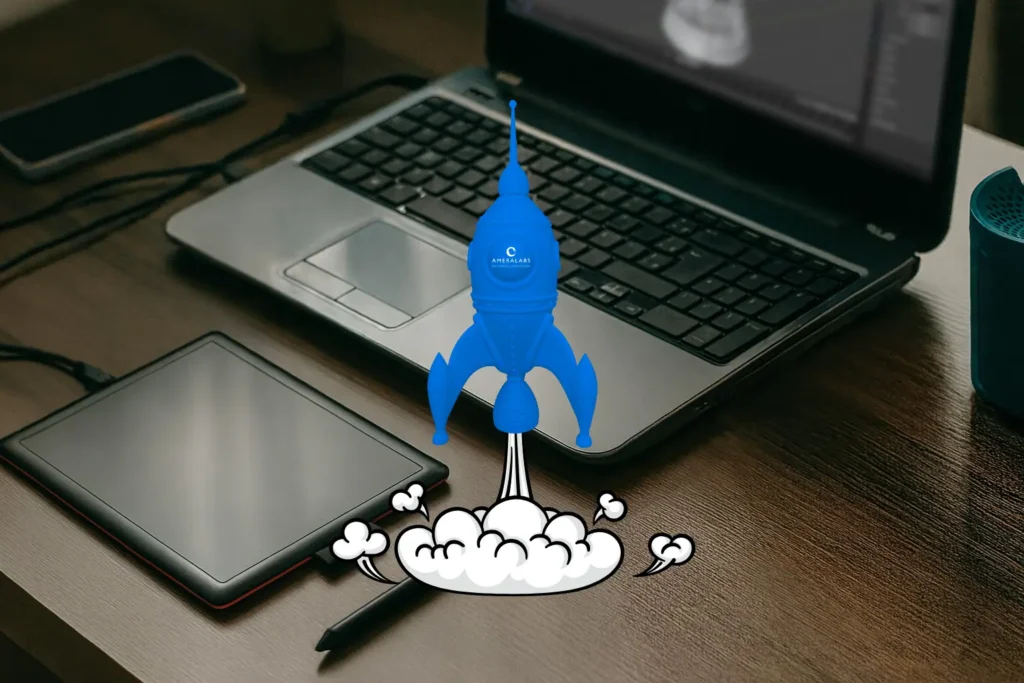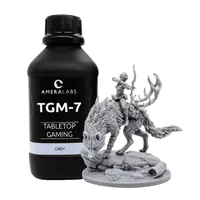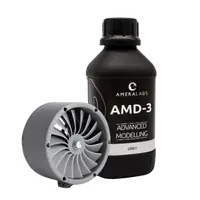Your digital miniature STL business lets you craft 3D printable minis for tabletop gamers to bring epic battles to life. With tabletop gaming worth $15.8 billion and 3D printing growing from $20.37 billion in 2024 to $135.2 billion by 2032, now’s a great time to start. This guide shows you how to spot trends, build a brand, sculpt STLs with unique names and stories, sell worldwide, promote your work, protect your profits, and grow your business. Begin with a few minis, spend $50 to $150 (not counting a $500 to $700 computer), and plan for a 3-to-6-month learning curve. Your digital STL business lives online, connecting with gamers instantly without inventory. Check out MyMiniFactory, share your STL ideas below, or join a newsletter to start your 3D printable miniature business and bring your designs to tabletops everywhere!
Disclaimer: External links included; no affiliations with platforms or tools mentioned.
Why Start a Digital Miniature STL Business?
The digital miniature STL market offers creators a low-cost entry into the thriving tabletop gaming and 3D printing industries. Using tools like Blender and platforms like MyMiniFactory, you can reach a global audience with custom miniatures. With high profit margins and growing demand, this venture blends creativity and scalability. The following sections detail the STL market’s growth, tabletop gaming’s popularity, and key challenges to help you launch your business.
Why Are Digital STLs Growing?
The digital miniature STL business is thriving, driven by tabletop gaming’s $15.8 billion industry and 3D printing’s growth from $20.37 billion in 2024 to $135.2 billion by 2032. Half of D&D and Warhammer players want custom minis, like sci-fi bunkers or fantasy knights, pushing STL sales up by 15 to 25%. For example, platforms like MyMiniFactory let you sell miniature STLs globally with low costs, keeping 70 to 90% of profits without storing inventory. A single STL can bring steady sales as gamers buy over time. Affordable 3D printers make custom minis accessible, encouraging repeat customers. More on choosing a resin 3D printer in Choosing the Best 3D Resin Printer for Beginners blog post. With low startup costs ($50 to $150, not counting a computer) and free tools like Blender, it’s easy to get started. Your digital STL business taps into this growing market, blending creativity with global reach for tabletop gaming fans.
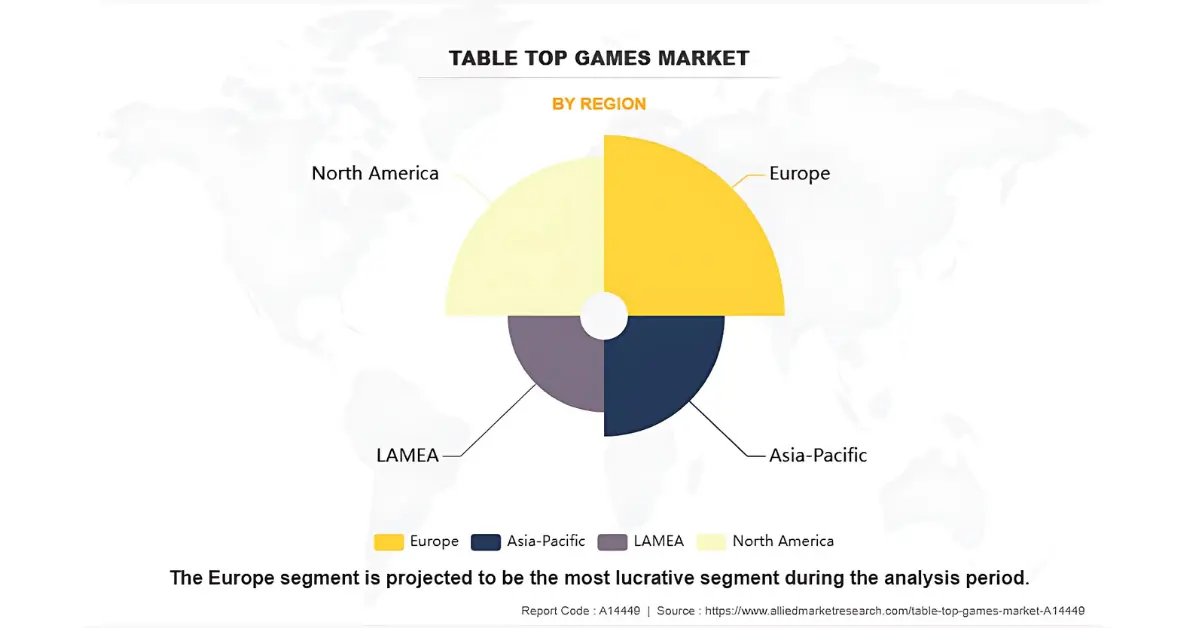
What Makes Tabletop Gaming Popular?
Tabletop gaming draws in 30% of US households and flourishes with D&D players and Warhammer fans seeking custom minis, boosting STL sales by 15 to 25% for designs like sci-fi drones or fantasy ruins. For instance, MyMiniFactory’s 2024 trends show low-poly knights up 20%. Spend a few hours weekly on Reddit’s r/rpg or Google Trends to find niches like cyberpunk slums or 2025 releases like 28 Years Later for horror minis. Market analysis and trends help you spot market gaps. Therefore, your digital STL business grows by crafting minis with names and stories that spark players’ imaginations, connecting with gaming communities worldwide.
What Challenges Might You Face?
Starting a digital miniature STL business feels like facing a dungeon boss. Sculpting takes 3 to 6 months to learn, but free Blender tutorials from Blender Guru (blenderguru.com) help you craft a goblin in about 12 hours. Since only 10 to 15% of gamers own printers, focus on platforms like MyMiniFactory and Instagram’s #MiniaturePrinting. Piracy can hurt profits, but logos and licenses offer protection. Income varies by niche, promotion, and catalog size. For example, feedback from Reddit’s r/3Dprinting sharpens your STLs. Your digital STL business grows with quality designs and active community engagement.
How Do I Prepare My Digital Miniature STL Business?
To make great digital STLs for your miniature business, you need the right tools, good sculpting skills, and a clear sense of what gamers like. By focusing on designs that print well, avoiding common mistakes, and adding unique touches like 3D scanning, you can create minis that shine in the tabletop gaming world. The sections below walk you through picking tools, improving your sculpting, making sure prints work, designing for gamers, steering clear of errors, and using 3D scanning to boost your 3D printable miniature business.
How Do I Build a Brand for My Digital STLs?
Your brand gives your digital miniature STL business a story that connects with gamers. Pick a name like DragonForge to evoke adventure and weave tales for minis like “Fireblade Knight” to make them memorable. Next, create a bold logo with Canva (canva.com), using axes or runes, and add it to STL bases in Blender to increase interaction on Reddit’s r/minipainting by 7 to 10%. Craft a tagline like Craft Your Legend and share your passion on MyMiniFactory’s profile to boost sales by 5 to 10%. Spend 1 to 2 weeks on branding, costing $0 to $50 for visuals or a domain. Share your brand launch on Discord’s #TabletopGames to attract fans. Check online guides for branding tips to make your digital STL business stand out.
How Do I Price My Digital STLs?
Smart pricing draws gamers to your digital miniature business. Start with single STLs at $5 to $10 or bundles at $20 to $30 for value. For example, price a knight or scanned ruin at $5 to $7 for early sales. Test designs on Thingiverse (thingiverse.com) for feedback to improve quality and boost clicks by 10%. Make promo posts for props like barrels to encourage reviews. Account for platform commissions (20 to 30%). Check Cults3D for pricing trends to stay competitive. As your catalog grows, sales increase. Your 3D printable miniature business thrives with affordable, high-value STLs.
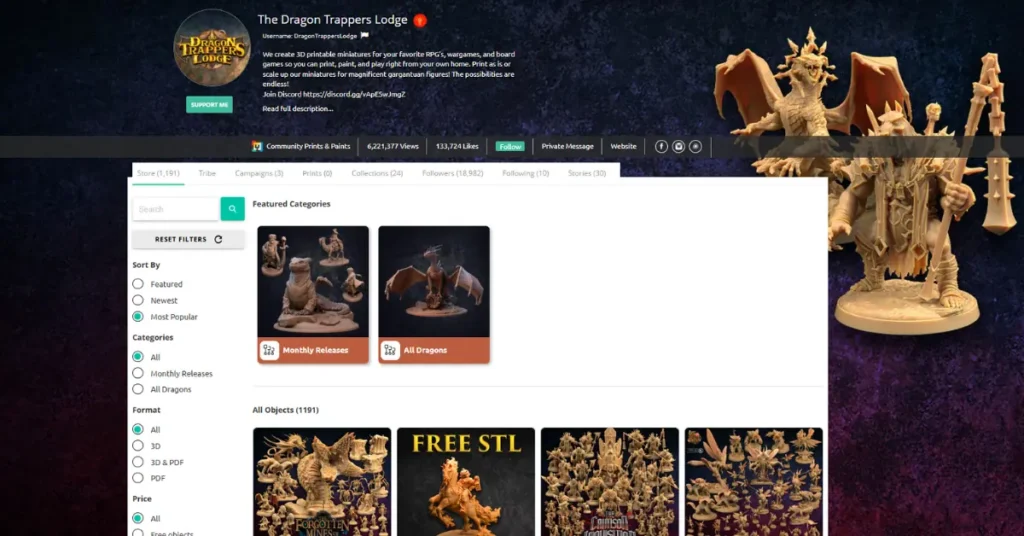
How Do I Get Ready to Launch?
Launch your digital miniature STL business with a small catalog, like terrain or a “Grimskull Orc,” to sell digital miniatures worldwide. Sign up on MyMiniFactory with PayPal or Stripe for payments. Write engaging listings, like “This 28mm orc is ready for D&D battles!” Test prints at a makerspace to cut refunds by 10%. Use a spreadsheet to track tasks as a solo creator. Next, tease your launch on Reddit’s r/PrintedMinis to build excitement. Plan 2 to 4 weeks for setup to start smoothly. A focused, high-quality catalog sets your digital STL business up for steady growth.
How Do I Sculpt Irresistible Digital STLs?
To make awesome digital STLs for your miniature business, you need the right tools, solid sculpting skills, and a good feel for what gamers love. By focusing on designs that print well, steering clear of common mistakes, and adding unique touches like 3D scanning, you can create minis that really pop in the tabletop gaming world. The sections below walk you through picking tools, sharpening your sculpting chops, making sure your STLs print smoothly, designing for gamers, dodging errors, and using 3D scanning to give your 3D printable miniature business a boost.
What Tools Do I Need to Start Sculpting?
Your digital miniature STL business starts with free tools: Blender for sculpting minis, Lychee Slicer (lycheeslicer.com) for adding supports, and Canva (canva.com) for logos and listings. Optional tools like SculptGL (stephaneginier.com/sculptgl) for details, 3DF Zephyr Free (3dflow.net) for scanning, and 3DBenchy (3dbenchy.com) for testing enhance your work. Use a smartphone with a decent camera for scanning, or budget $100 to $150 for a used one. A $500 to $700 PC (e.g., Ryzen 3, 8GB RAM, GTX 1650) runs Blender; upgrade to 16GB RAM and RTX 3060 ($300 to $500) later for complex designs. Spend 3 to 6 months learning to create STLs for your 3D printable miniature business.
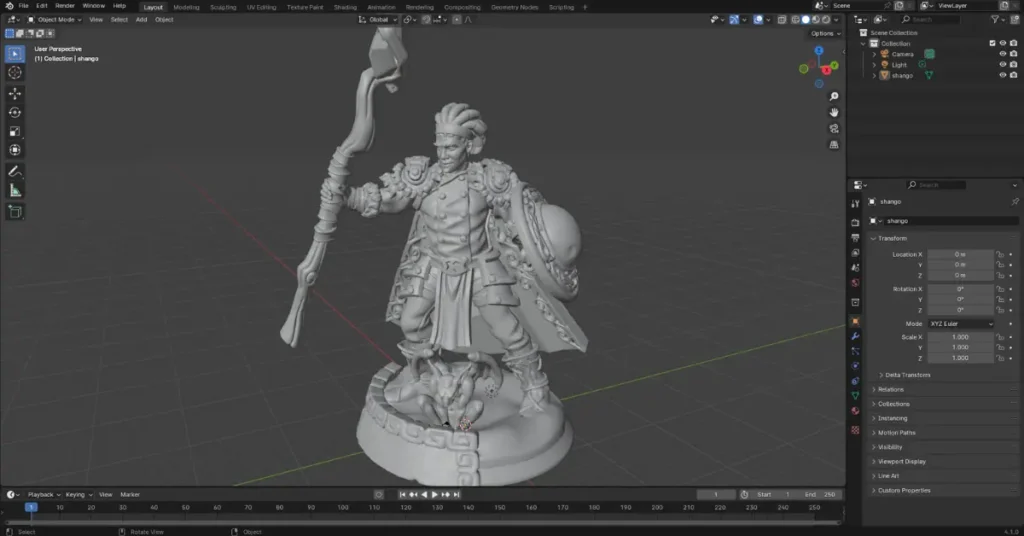
How Do I Build My Sculpting Skills?
Sculpting is the heart of your digital miniature STL business, turning ideas into 3D printable minis gamers love. Start with Blender, a free tool for beginners. For example, try Blender Guru’s “Donut Tutorial” to learn the interface in about 5 hours, covering navigation and object creation. Follow YouTube tutorials for miniature sculpting, like a 28mm barrel or tree in about 10 hours, teaching tools like Sculpt Mode for shaping and detailing. Commit 10 to 15 hours weekly over 3 to 6 months, spending 2 to 3 hours daily. Sculpt a rocky terrain base in week one, then a goblin mini by week four, aiming for a complete model in about 12 hours. Share drafts on Reddit’s r/3Dprinting for feedback, like fixing overhangs that fail prints. Test prints at a local makerspace to refine quality and printability. Try dynamic poses, like a charging knight, to boost appeal by 10%. Next, move to complex designs, like a dragon with layered scales, after mastering basics. BlenderNation offers community tips. Steady practice and feedback make your STLs stand out, building a strong foundation for your 3D printable miniature business.
How Do I Ensure My Designed STLs Print Well?
Design STLs that print smoothly for your digital miniature STL business by angling parts at 45 degrees in Blender (R key) to reduce large cross-sections. For instance, hollow models in Lychee Slicer to save 25 to 30% on material. Fix errors with Blender’s 3D Print Toolbox in 5 minutes.
Alternatively, if you want to focus on designing your miniatures and streamline your workflow, consider outsourcing support placement to specialized services, like Atlas3D, Heydash Workshop or hire freelancers. Platforms like Fiverr, Upwork, or dedicated 3D printing communities offer professionals who can create optimized, pre-supported STLs for your designs, saving you time and ensuring high-quality results for your customers.
Test print your designs (or have your support provider test them) at a makerspace to avoid broken parts and cut refunds by 10 to 15%. Include a README with model info (e.g., “28mm knight”), license type, storefront link, and printing tips (0.05mm layers, 30 to 40s cure) to reduce complaints by 10%. Plan 1 to 2 test prints per STL. Reliable STLs keep 80% of buyers, strengthening your digital STL business globally.
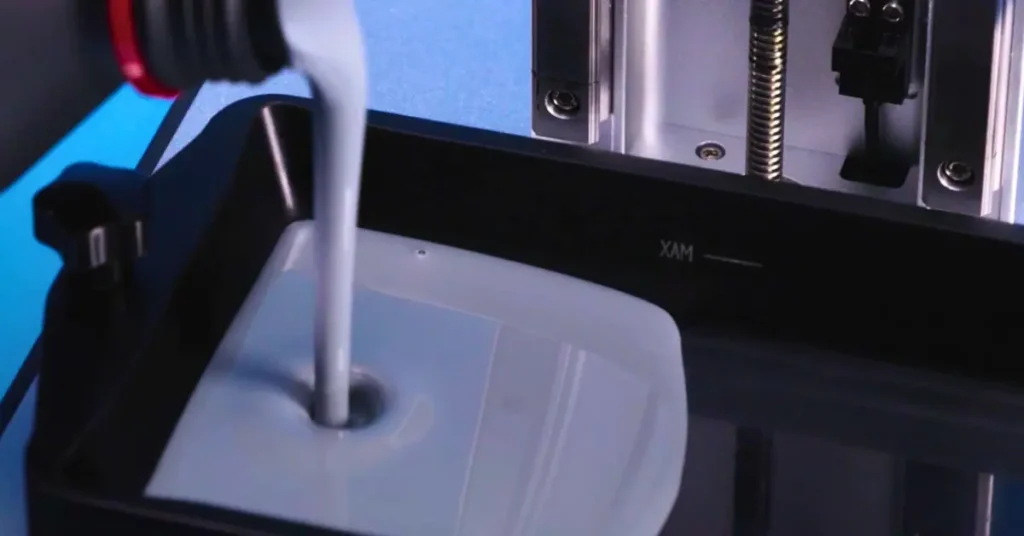
How Do I Design Minis Gamers Want?
Create STLs that excite gamers to sell miniature STLs effectively. Check MyMiniFactory’s Trending tab, where cyberpunk assassins gained 20% popularity in 2024. Research 2025–2026 releases on IMDb, like Superman for superhero terrain, to tap trends. Add supports, as 75% of buyers prefer pre-supported STLs. Set scales in Blender (N key) to 28mm for D&D, 28mm to 32mm for Warhammer, or 15mm for Flames of War. Confirm scales on Reddit’s r/PrintedMinis. For example, modular terrain, like sci-fi bunkers, boosts sales by 15 to 20%. Build a small catalog to scale up as demand grows. MyMiniFactory’s guides spark ideas for your digital miniature business.
How Do I Avoid Mistakes and Improve My STLs?
Avoid errors in your digital miniature STL business with these steps:
- Support overhangs past 45 degrees for clean prints.
- Set 1.5 to 2mm walls in Blender (Properties > Thickness) to prevent cracks.
- Fix non-manifold edges with Blender’s 3D Print Toolbox in 5 minutes.
- Use 28mm, 15mm, or 32mm scales, matching game needs.
Test prints, expecting 1 to 2 fails but ensuring quality. Create multi-part STLs, like swappable goblin heads, for 15 to 20% sales boosts. Dynamic poses, like a charging orc, increase appeal by 10%. Refine each STL over several hours. For example, share designs on Reddit’s r/3Dprinting for feedback to improve your digital STL business globally.
How Can I Use 3D Scanning for Unique STLs?
Elevate your digital miniature STL business with unique designs by scanning real-world objects. Use 3DF Zephyr Free to scan props, bases, or terrain during a hike in the woods or urban exploring session. For example, scan a gnarled tree root for a fantasy forest base or a rusted pipe in an abandoned factory for a post-apocalyptic bunker STL. Scanning can take minutes to hours, depending on object size and complexity. Use a smartphone with a decent camera, or budget $100 to $150 for a used one. Import scans into Blender, modify (e.g., scale to 28mm with N key, add details with Sculpt Mode), and export as STLs with supports using Lychee Slicer or Chitubox. Test prints at a makerspace to ensure quality. Scanned STLs, like rocky terrain or sci-fi debris, sell for $3 to $10, with tags like “post-apocalyptic terrain” boosting engagement by 5 to 10%. Research 2025–2026 releases on IMDb for trends like horror minis. Share scans on Reddit’s r/3Dprinting for feedback. Start with one scan to diversify your 3D printable miniature business.
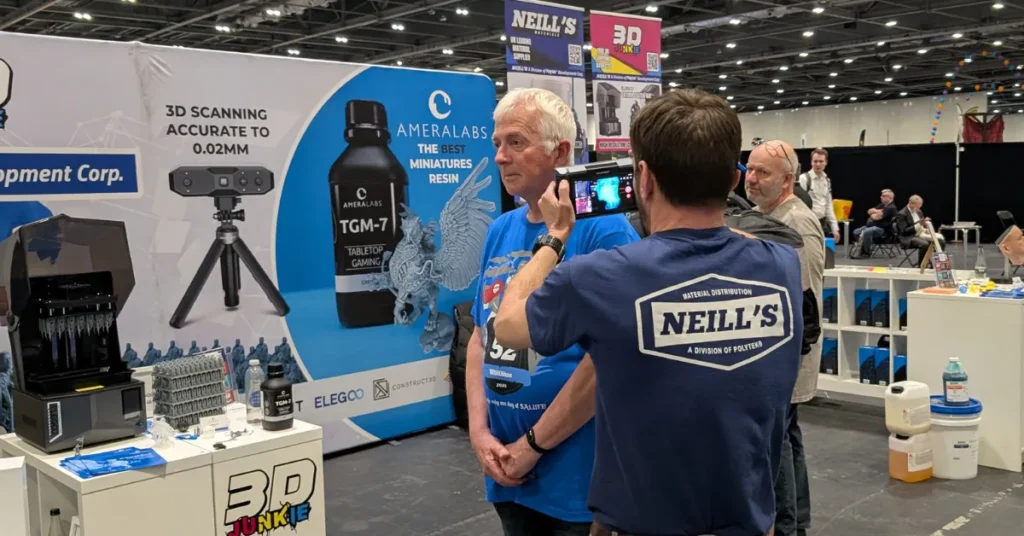
How Do I Sell My Digital Miniature STLs?
To sell your digital miniature STLs successfully, you need to choose the right platforms, set up a shop that grabs attention, and offer products that gamers love. By focusing on smart platform choices, clear listings, and varied sales options like singles, bundles, and subscriptions, you can build a steady income stream. The sections below guide you through picking platforms, launching your shop, selling individual STLs, creating bundles, starting a subscription model, and growing your catalog to strengthen your 3D printable miniature business.
Which Platforms Should I Choose?
Choose the right platform to launch your digital miniature STL business with a small catalog, like a “Void Knight” with a heroic story. For example, MyMiniFactory is ideal for tabletop gamers, especially D&D fans and Warhammer players, charging a 20% commission and offering subscription tiers. Sell a $5 orc STL to RPG fans. Cults3D provides strong feedback tools but charges 20 to 30% fees, with EU sellers needing VAT compliance (ec.europa.eu/taxation). Thingiverse is free, perfect for sharing props to gather feedback, with indirect sales via Patreon. Gumroad has low 3 to 10% fees but lacks a gaming community. Therefore, compare platforms below:
| Platform | Commission | Audience Focus | Sales Potential | Feedback | Setup Time |
|---|---|---|---|---|---|
| MyMiniFactory | 20% | Tabletop gamers | High | Moderate | 1–2 days |
| Cults3D | 20–30% | 3D printing hobbyists | Moderate | High | 1–2 days |
| Thingiverse | 0% | Makers | Low (indirect) | High | 1 day |
| Gumroad | 3–10% | General creators | Low | Low | 2–3 days |
Budget $0 to $100 for setup (e.g., visuals). Start with MyMiniFactory for sales, use Thingiverse for feedback, and ensure EU VAT registration if needed.
How Do I Set Up My Shop?
Set up a MyMiniFactory shop with PayPal or Stripe (2.9% fee, stripe.com) for secure payments. Upload a small catalog with pre-supported STLs and a README with printing tips (e.g., 0.05mm layers, 30 to 40s cure) to cut refunds by 10%. For example:
- Title: Grimskull the Exiled Orc – 28mm D&D Miniature.
- Description: Lead your D&D campaign with Grimskull, a battle-scarred orc warrior exiled from his clan. This 28mm STL, pre-supported for resin printing, delivers intricate armor and a dynamic pose.
- Price: $5.99.
- Tags: D&D, orc, fantasy, 3D printable miniature.
- Alt Text: 3D render of a 28mm orc warrior with an axe on a rocky base.
Track tasks with a spreadsheet. Share your shop on Reddit’s r/PrintedMinis to attract gamers. Plan 2 to 4 weeks to launch smoothly. A focused shop with quality STLs and compelling stories grows your digital STL business steadily.
How Do I Sell Single Miniature STLs?
Sell single STLs for $5 to $10 to start your 3D printable miniature business. For instance, render a 28mm sci-fi sniper in Blender (F12 key) and create a listing: “Void Knight, lone survivor of a cosmic war, dominates sci-fi battles.” Ensure print-ready STLs to reduce refunds by 10%. Use keywords like 3D printable miniatures on MyMiniFactory for better engagement. Make promo posts to encourage reviews. Tease releases on Discord’s #TabletopGames to draw fans. A named STL with a short story stands out, boosting appeal. Start with single STLs to test your digital miniature business.
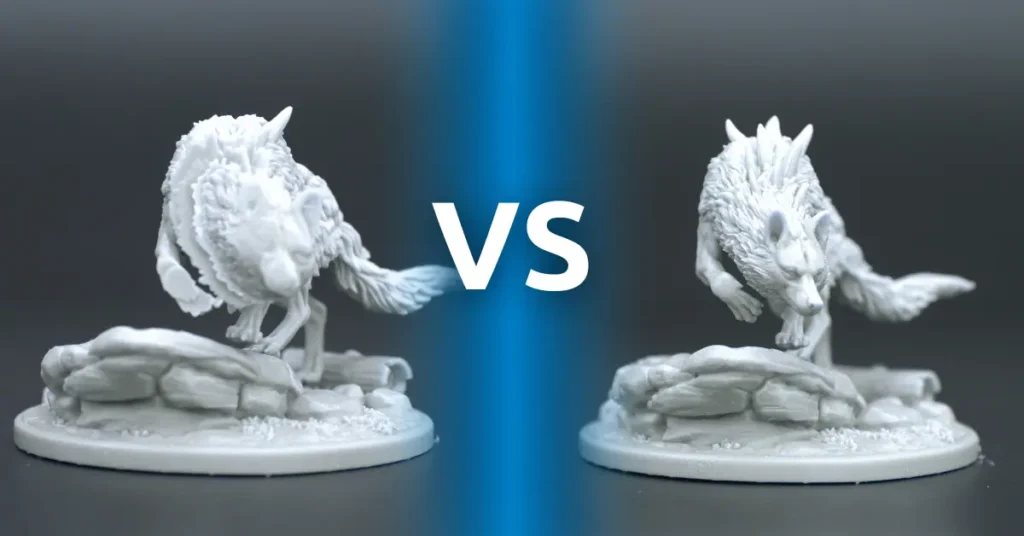
How Do I Create Winning STL Bundles to Sell?
Attract 60% of shoppers with a $20 to $30 bundle, like a knight clan plus a scanned base, offering value over singles. Write a listing: “Command the battlefield with the Starforge Clan, defenders of a lost outpost!” Include print-ready files and test prices on Cults3D for 10 to 15% more clicks. Render in Blender and share online to build excitement. As your catalog grows, bundles drive higher sales. Next, offer $10 to $15 subscriptions to pull buyers. Start with one bundle to grow your 3D printable miniature business.
How Do I Start a Subscription Model?
Launch a $10 to $15 Patreon or MyMiniFactory subscription, offering a Monster Pack with Roll20 tokens, priced below $20 to $30 bundles for steady revenue. Deliver 3 to 5 STLs monthly, keeping 70% of subscribers. Create a Patreon page with clear tiers (e.g., “$10 for 3 STLs/month”) and release first-Mondays, posting online to reach players. For example, host Q&As to boost retention by 5 to 10%. Offer exclusive previews to cut churn by 5%. Start subscriptions after steady single STL sales to grow your 3D printable miniature business.
How Can I Expand My Miniature STL Catalog?
Grow your digital miniature STL business at $500 monthly sales by hiring Fiverr freelancers ($10 to $50/hour) to sculpt STLs, doubling your catalog to 10 to 15 in 6 to 12 months. Ensure freelancers’ style matches your brand (e.g., check portfolios for fantasy aesthetics). License designs from Cults3D creators for $20 to $50 per model, ensuring commercial rights. Use Trello (trello.com) to manage tasks. Budget $50 to $150 monthly for outsourcing and $100 to $300 for ads to drive traffic. Test new STLs on Thingiverse for feedback before selling on MyMiniFactory. Expanding your catalog boosts revenue for your 3D printable miniature business.
Do I Need a Website for My Digital STLs?
A website can enhance your digital miniature STL business, but it’s not essential when starting out. By leveraging established platforms, timing your website launch wisely, and driving traffic through smart promotion, you can grow sales effectively. The sections below explain why platforms are ideal early on, when to consider building a website, and how to attract customers without one to strengthen your 3D printable miniature business.
Should I Build a Website for Selling Miniature STLs Early?
A website seems appealing for your digital miniature STL business, but start with MyMiniFactory and Cults3D, which offer built-in audiences and handle payments at 20 to 30% commissions. A website costs $100 to $500 yearly for hosting and domains (e.g., GoDaddy, godaddy.com) and needs upkeep. For example, focus on a small catalog to drive early sales, as platforms deliver 80% of beginner revenue. Share listings on Discord’s #TabletopGames to reach players. Platforms simplify sales for your 3D printable miniature business.
When Should I Create a Website?
Build a website for your miniature STL business at $500 to $1,000 monthly sales, after 6 to 12 months with a larger catalog. A site via Wix (wix.com) or Squarespace (squarespace.com) costs $15 to $30 monthly and acts as a digital storefront, showcasing STL galleries, selling directly, and building your brand. Link Stripe for sales, ideal for EU VAT. A website boosts trust and cuts platform fees by 10 to 20%, but needs effort to drive traffic. Post online to reach gamers. Test a landing page with a single STL bundle. Scale to a website when your digital STL business justifies the investment.
How Do I Drive Traffic Without a Website?
Drive traffic to your digital miniature STL business without a website by writing engaging MyMiniFactory listings. For instance, share Blender renders on Instagram’s #MiniaturePrinting for US audiences or Discord’s #TabletopGames for loyal fans. Post on Reddit’s r/rpg to reach gamers. Add shortcuts in STL ZIPs (e.g., myminifactory.com/profile) to boost traffic. Commit weekly time to promotion to support early sales. Platforms provide built-in visibility for your 3D printable miniature business.
How Do I Promote My Digital STLs to Sell?
To effectively promote your digital STL files for 3D printable miniatures, strategically utilize targeted marketing approaches across various platforms. By seamlessly integrating social media, influencer collaborations, local engagement, fan interaction, and analytics, you can significantly enhance visibility and drive sales. The following sections provide actionable strategies to help grow your miniature business.
How Do I Use Social Media?
Promote your digital miniature STL business on Instagram with Blender renders tagged #MiniaturePrinting, posting 2 to 3 times weekly. Share on Discord’s #TabletopGames. Next, post timelapse videos of your sculpting process (e.g., “Skullcrusher Orc” in Blender) to grow your audience and show designs are handcrafted, not AI-generated. Create a Canva infographic (e.g., “STL Pricing Guide: Singles $5 to $10, Bundles $20 to $30”) to boost engagement by 5 to 10%. Alt Text: Canva infographic with text “STL Pricing Guide” over a fantasy knight STL, listing single STL ($5 to $10) and bundle ($20 to $30) prices. Share 15-second TikTok clips to reach more fans. Post on Tuesday or Wednesday, 7 to 9 PM EST, when tabletop communities (e.g., Reddit’s r/rpg) are active, boosting engagement by 10 to 15%. Promote releases 1 to 2 weeks before launch with WIP renders, sharing a final reveal 1 to 2 days prior on Instagram Stories or Discord for 10 to 15% more interaction. These efforts drive traffic to your shop, growing your 3D printable miniature business.
How Can Influencers Help Sales?
Boost your digital miniature STL business by partnering with Twitch D&D streamers or YouTube DMs, offering 10 to 15% commissions ($5 to $10). Gift a scanned terrain STL for reviews to drive traffic. Share timelapses on Discord’s #TabletopGames and post collabs online to reach players. For example, Instagram ads ($100 to $300 monthly) target RPG fans. Research streamers for niche alignment. Collaborations increase visibility, supporting sales growth once established. Start with one collab to test impact for your digital STL business.
How Do I Create Local Buzz?
Even for a 3D printable miniature venture, local game stores ($100 to $200) can drive online sales, as only 10 to 15% of gamers own printers. Print 10 to 15 minis with durable AmeraLabs TGM-7 resin to ensure samples survive handling at expos. Create QR code flyers linking to MyMiniFactory. For example, host 1-hour painting demos, collecting 10 to 20 emails via Google Forms (forms.google.com) to promote your shop. Share events online to attract gamers. At $5004 monthly sales, try expos like Adepticon ($1,000+). Start with one store to build buzz for your digital miniature STL business.
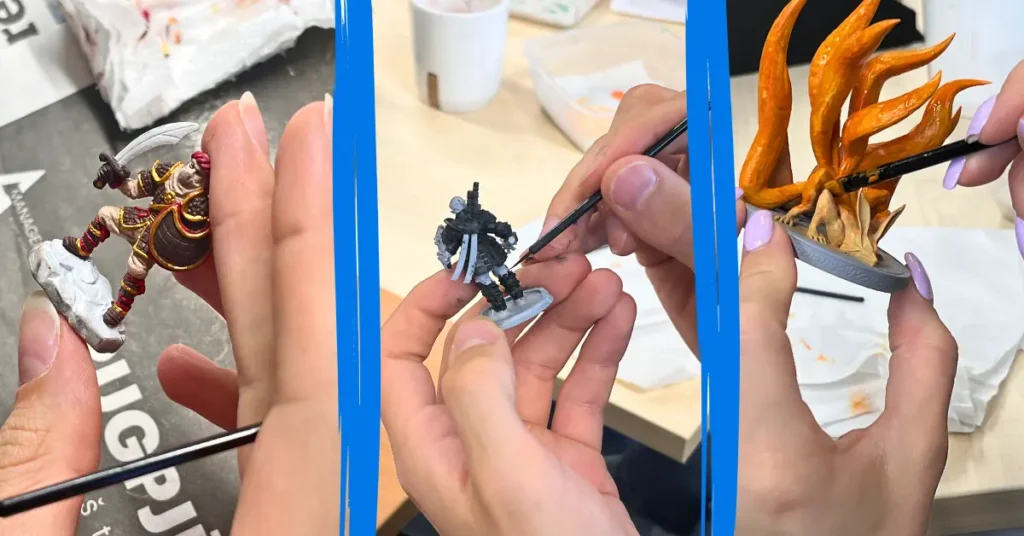
How Do I Engage Fans?
Engage fans to sell digital miniatures by sharing free prop STLs, like scanned ruins, on Cults3D for 15 to 25% more engagement. Show a sniper’s scale with Sketchfab AR previews (sketchfab.com). Run Reddit r/rpg contests, like “Write a backstory for a hero STL by July 30,” via Google Forms, sharing online to reach players. For instance, Twitter polls (fantasy vs. sci-fi terrain) grow interaction by 10 to 15%. Guest posts on Bell of Lost Souls draw visits. Contests drive traffic, supporting sales growth. Design visuals to strengthen your digital STL business.
How Do I Track Marketing Success?
Track what drives traffic to your digital miniature STL business using Google Analytics (analytics.google.com) for MyMiniFactory visits. MyMiniFactory’s dashboard monitors STL sales. Test Instagram post titles (e.g., Epic Terrain! vs. Print Your Hero!) for 5 to 10% more clicks. Review Reddit r/PrintedMinis feedback to tweak posts. Adjust ad budgets ($100 to $300 monthly) for better ROI. With consistent marketing, campaigns support sales growth. Therefore, check analytics biweekly to optimize your 3D printable miniature business.
How Do I Secure My Digital Miniature STL Business?
How Do I Protect My Digital STLs?
Protect your digital miniature STL business by sculpting or scanning original minis to avoid $5,000 to $50,000 lawsuits. However, use MyMiniFactory’s $10 to $20 licenses to deter thieves. Embed a logo on bases in Blender (Text Tool, add “logo”) to mark your work and grow interaction on Reddit r/minipainting by 7 to 10%. Alt Text: Blender screenshot shows Text Tool embedding “DragonForge” logo on a 28mm base. Include shortcuts to myminifactory.com/profile in STL ZIPs. Set Google Alerts (google.com/alerts) for theft. DMCA notices help you protect your digital assets. These steps safeguard your digital STL business.
How Do I Stay Compliant?
Stay legal in your digital miniature STL business with these steps:
- In the US, secure a $25 to $100 business permit via SBA.gov within 6 months to avoid $500 to $1,000 fines; in the EU, register for VAT at €10,000 revenue (ec.europa.eu/taxation).
- Track sales with Wave Accounting (waveapps.com) to save time.
- Review MyMiniFactory’s terms (myminifactory.com/terms) before launching.
- Hire an accountant ($100 to $200/year, upwork.com) for US sales tax (0 to 8%) or EU VAT (20 to 27%) at $1,000 yearly revenue.
- Use free tools or a tax professional for compliance.
These save $100 to $200 yearly. Start with a permit and tracking to keep your 3D printable miniature business compliant.
How Do I Build Trust with Customers?
Earn trust to sell miniature STLs by testing prints to ensure no broken parts. Reply to Cults3D feedback in 24 hours (e.g., “Fixed supports!”). Post timelapses on Discord’s #TabletopGames to prove your STLs are original, not AI-generated. Include a README with model info, license type, storefront link, and printing tips to cut complaints by 10%. For example, use Google Forms surveys to tweak STLs, raising retention by 10 to 15%. A 4-star Trustpilot rating sways 88% of buyers. Start with testing and quick replies to build trust for your 3D printable miniature business.
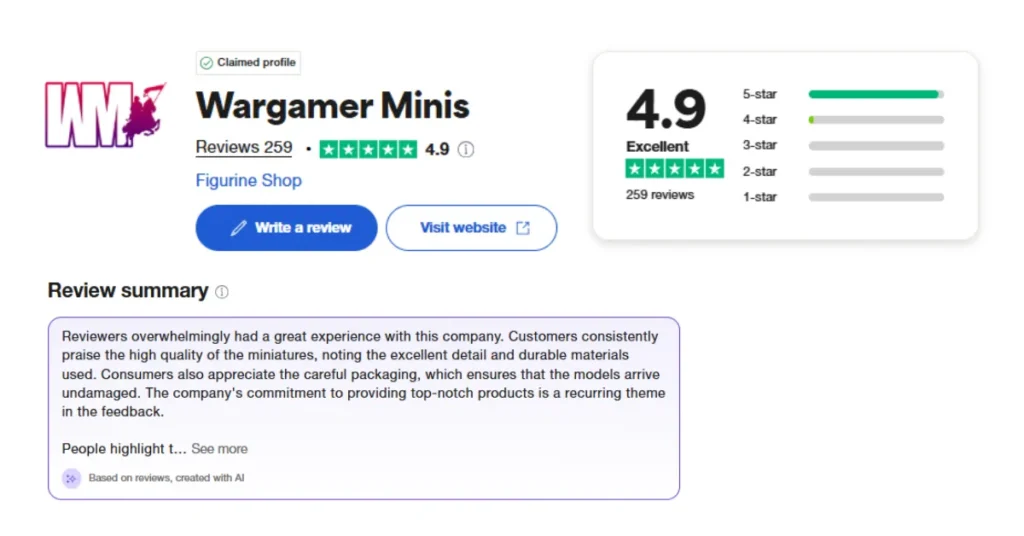
How Do I Scale My Digital Miniature STL Business?
To grow your digital miniature STL business, focus on attracting a loyal fanbase, reaching international markets, building a strong community, and boosting your revenue streams. By connecting with gamers, targeting global audiences, collaborating with creators, and adding new product offerings, you can take your business to the next level. The sections below offer practical steps to expand your audience, enter overseas markets, foster community engagement, and increase profits for your 3D printable miniature business.
How Do I Grow a Fanbase?
Grow your digital miniature STL business by sharing models like gothic STLs on Reddit’s r/PrintedMinis to reach fans. Host 1-hour miniature painting workshops at local game stores to drive shop traffic and increase local brand awareness. Send Beehiiv newsletters (beehiiv.com, free tier) with Terrain Tips, boosting open rates by 10%. Offer a free STL after five purchases for 10 to 15% more engagement. Start with Instagram to expand your 3D printable miniature business.
How Do I Reach Global Markets?
Expand to new markets with Spanish or Japanese listings at steady sales ($500), lifting clicks by 10 to 15%. Use DeepL (deepl.com) for drafts, then Upwork freelancers ($10 to $20) for gaming terms. Sell samurai STLs ($10 to $15) via Wix ($15 to $30/month). Use PayPal or Stripe for payments. Start with one translation for your digital miniature STL business.
How Do I Build a Community?
Build a community to sell digital miniatures by partnering with Reddit r/PrintedMinis creators for joint STLs. For example, collaborate on a shared fantasy terrain set to attract their followers. Next, join Patreon to gain 5 to 20 subscribers monthly at $10 to $15 after steady sales, offering exclusive STLs like a dragon rider. Additionally, run Discord #TabletopGames giveaways, such as a sci-fi bunker, to engage fans and boost visibility. Then, co-host Twitch streams with D&D creators to drive traffic to your shop. Moreover, allocate weekly time for networking, like commenting on Reddit posts, to support sales growth. Therefore, start with one collaboration to grow your 3D printable miniature business community.
How Do I Scale Up Revenue?
Diversify your digital miniature STL business at $500 monthly sales. For example, launch a $25 to $50 merch line, like dice towers, on Etsy for 15 to 20% margins, or sell digital miniatures via print-on-demand using durable resins like AmeraLabs TGM-7. Next, hire Fiverr freelancers ($10 to $50) to sculpt STLs, doubling your catalog in 6 to 12 months. Additionally, use Trello (trello.com) to manage tasks efficiently. Then, spend $100 to $300 monthly on Google Ads to gain 5 to 10% more views. Moreover, budget $50 to $150 for growth initiatives like outsourcing or ads. Therefore, scaling strategically boosts revenue for your 3D printable miniature business.
Conclusion: Grow Your Digital Miniature STL Legacy
Launch your digital miniature STL business with a small catalog, like a “Starforge Bunker” with a gripping story, to sell miniature STLs in 1 to 3 months. For example, use free tools costing $50 to $150, not counting a $500 to $700 PC, and leverage MyMiniFactory to scale to higher sales within a year. Top creators, for instance, achieve steady revenue through strong marketing efforts. Therefore, share posts and Beehiiv newsletters to boost traffic by 10 to 15%. Additionally, at $500 to $1,000 monthly sales, sell physical minis via print-on-demand using durable resins like AmeraLabs TGM-7. Meanwhile, hike in the woods or explore urban ruins with a 3D scanner to craft unique STLs, turning nature or decay into epic tabletop terrain. Start sculpting your first STL today and join the $15.8B tabletop revolution! Moreover, share your story at myminifactory.com/profile to inspire gamers worldwide and build your legacy with a thriving 3D printable miniature business. Download free guides from MyMiniFactory, join a newsletter, or comment below with your STL ideas!
References
- Tabletop Gaming Market Report, 2024
Allied Market Research – Table Top Games Market
https://www.alliedmarketresearch.com/table-top-games-market-A14449 - 3D Printing Industry Analysis, 2024
Precedence Research – 3D Printing Market
https://www.precedenceresearch.com/3d-printing-market - MyMiniFactory Trends Report, 2024
MyMiniFactory – Creator Portal (login required for statistics)
https://creator.myminifactory.com/statistics-page - IMDb Upcoming Releases, 2025–2026
IMDb – Movie Release Calendar
https://www.imdb.com/calendar/ - Social Media Engagement Study, 2024
Statista – Chart of the Day: Social Media Statistics
https://www.statista.com/chartoftheday/social%20media%20statistics/ - Lychee Slicer Optimization Guide, 2024
Mango3D – Lychee Slicer Knowledge Base
https://support.mango3d.io/ - 3D Printing Best Practices, 2024
All3DP – 3D Printing for Beginners: How to Get Started
https://all3dp.com/2/3d-printing-for-beginners-all-you-need-to-know-to-get-started/ - EU VAT Compliance Guide, 2024
European Commission – VAT Rules for E-commerce
https://taxation-customs.ec.europa.eu/vat-e-commerce_en - Cults3D Creator Earnings Report, 2024
Cults3D – Seller Help (includes revenue share details)
https://cults3d.com/en/help/seller - Reddit and Instagram Analytics, 2024
Statista – Reddit Global Active Users
https://www.statista.com/statistics/325587/reddit-global-active-users/
Statista – Instagram Users Worldwide
https://www.statista.com/statistics/578364/instagram-users-worldwide/ - Trustpilot Consumer Behavior Study, 2024
Trustpilot Business – Customer Satisfaction Metrics
https://business.trustpilot.com/blog/learn-from-customers/what-types-of-metrics-measure-customer-satisfaction - Thingiverse Community Guidelines, 2024
Thingiverse – Terms of Use
https://www.thingiverse.com/legal/terms - AmeraLabs TGM-7 Material Safety Data Sheet, 2025
AmeraLabs – TGM-7 MSDS PDF
https://ameralabs.com/wp-content/uploads/MSDS/MSDS_AmeraLabs_TGM-7_EN.pdf
Frequently Asked Questions About Your Digital Miniature STL Business
What is a digital miniature STL business?
A digital miniature STL business involves creating and selling 3D printable STL files for tabletop gaming miniatures, like orcs or sci-fi terrain, to gamers worldwide. You design minis using tools like Blender, add supports with Lychee Slicer, and sell on platforms like MyMiniFactory. For example, your business can start with a single $5 STL, reaching D&D or Warhammer fans without physical inventory.
How much does it cost to start selling miniature STLs?
You can start your digital miniature STL business for $50 to $150, not counting a $500 to $700 computer. Use free tools like Blender and Lychee Slicer. For instance, a used smartphone for scanning ($100) or Canva Pro for visuals ($15 monthly) adds minor costs. Platforms like MyMiniFactory have no upfront fees, just a 20% commission.
How long does it take to learn sculpting for a 3D printable miniature business?
Learning to sculpt STLs takes 3 to 6 months with 10 to 15 hours weekly practice. Start with Blender Guru’s tutorials (blenderguru.com) to master basics in ~5 hours, then sculpt a goblin in ~12 hours using YouTube guides (youtube.com). Next, test designs on Reddit’s r/3Dprinting for feedback to refine your skills. Consistent practice builds a strong catalog for your digital STL business.
Which platform is best to sell digital miniatures?
MyMiniFactory (myminifactory.com) is ideal to sell miniature STLs, targeting tabletop gamers with a 20% commission. For example, its subscription tiers suit D&D and Warhammer fans. Cults3D (cults3d.com) offers feedback but charges 20 to 30% and needs EU VAT compliance. Thingiverse (thingiverse.com) is free for feedback but not direct sales. Start with MyMiniFactory for your 3D printable miniature business.
How do I protect my digital STL business from piracy?
Protect your digital miniature STL business by sculpting original minis or scanning unique objects, like a forest root, to avoid $5,000 to $50,000 lawsuits. Use MyMiniFactory’s $10 to $20 licenses and embed logos in Blender (Text Tool) to deter theft. For instance, set Google Alerts (google.com/alerts) for unauthorized use. DMCA notices ($10, dmca.com) recover $100 to $300, safeguarding your STL sales.
Can I sell physical minis alongside digital STLs?
Yes, at $500 to $1,000/ monthly sales, sell physical minis via print-on-demand using durable resins like AmeraLabs TGM-7. For example, print 10 to 15 minis for local game stores ($100 to $200) to drive online STL sales. Share QR code flyers linking to your MyMiniFactory shop. This diversifies your 3D printable miniature business while keeping digital sales central.
How do I market my digital miniature STL business?
Promote your digital STL business on Instagram (#MiniaturePrinting) with Blender renders, posting Tuesday or Wednesday, 7 to 9 PM EST, for 10 to 15% more engagement. Share timelapses on Discord’s #TabletopGames to prove originality. For instance, create a Canva infographic showing STL prices ($5 to $108 singles) to boost clicks by 5 to 10%. Run Reddit r/rpg contests to engage fans, driving traffic to your 3D printable miniature business.
